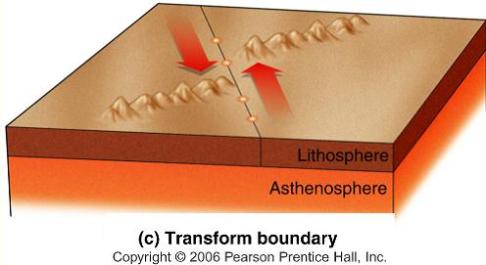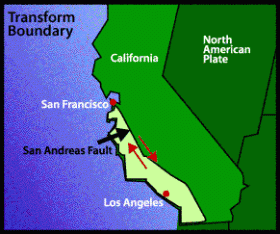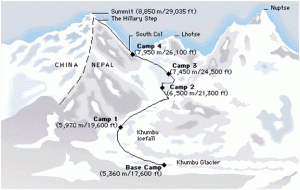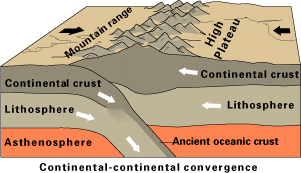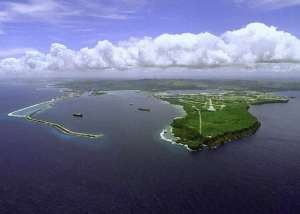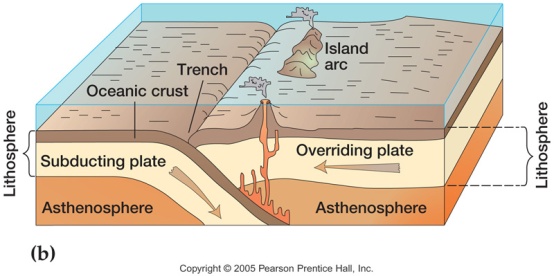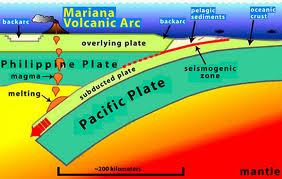I’m now in San Francisco! Today I walked all the way across the Golden Gate Bridge. It was a really windy day, and I got pretty cold, but the view was really amazing! Did you know, the color of the bridge is actually the rust proofing that was supposed to go under the paint? Everyone liked the color so much, they decided to ditch the paint and keep it as it is today. San Francisco is also the site of a big earthquake that happened back in 1906. This brings me to my next topic, the San Andreas Fault. This is the boundary between the North American Plate and the Pacific Plate, and extends for about 810 miles through California and the US. The southwestern part of California is part of the Pacific Plate and is moving northwest, while the rest of the US is part of the North American Plate and is moving southeast. These two plates aren’t crashing into each other or moving apart from each other, but sliding past each other. This type of boundary is called a transform boundary. These types of boundaries don’t create mountains or volcanoes, but they do cause many earthquakes.
Picture Links:
http://www.cotf.edu/ete/modules/msese/earthsysflr/plates4.html
http://www.insurancejournal.com/news/west/2012/05/29/249179.htm
http://gomyclass.com/geology10/files/lecshare1/html/web_data/file52.htm

